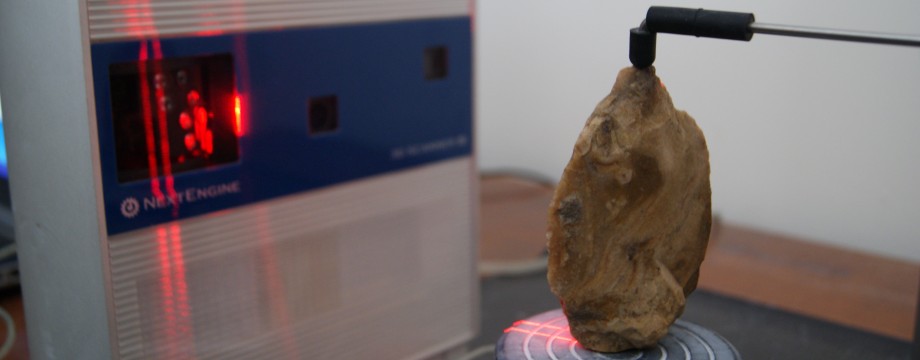Zooarchaeology is the study of faunal (animal) remains recovered at archaeological sites, including bone, hair, shell, and DNA. The Virtual Curation Laboratory (VCL) began systematically creating three-dimensional (3D) digital models of faunal remains in Fall 2012 using elements of a raccoon skeleton loaned by the Virginia Museum of Natural History (VMNH) and California University of Pennsylvania. Particularly through a partnership with VMNH, undergraduate researchers have been working under the direction of Digital Zooarchaeologist Marian Zechini to create a virtual faunal type collection. In addition to the raccoon elements, undergraduate student researchers and the director of the VCL are actively scanning groundhog, deer, crow, dog, cat, opossum, turkey, passenger pigeon, turtle, and other animal remains that might be found on archaeological sites. The digital comparative collection that we are developing in the VCL will allow archaeologists, educators and students the ability to study, manipulate and share virtual models of animal remains anywhere in the world. These 3D digital models and printed plastic replicas can be used in field or laboratory settings to help identify fragmentary animal remains or animal remains that have been reworked into tools or ornaments.
Main menu
- About the Virtual Curation Museum
- Digging Up the Noxious Weed: The Archaeology of Tobacco Smoking Pipes
- George is Waiting: Archaeology at George Washington’s Ferry Farm
- Making No Bones About It: Why Zoorchaeologists Study Animal Bones Found at Archaeological Sites
- Telling Time with Stone: How archaeologists use chipped stone tools to find the age of archaeological sites
Where the Past Meets the Future

Pingback: Dog Day Afternoon: Virtual Archaeology Across the Centuries at Colonial Williamsburg | the Virtual Curation Laboratory